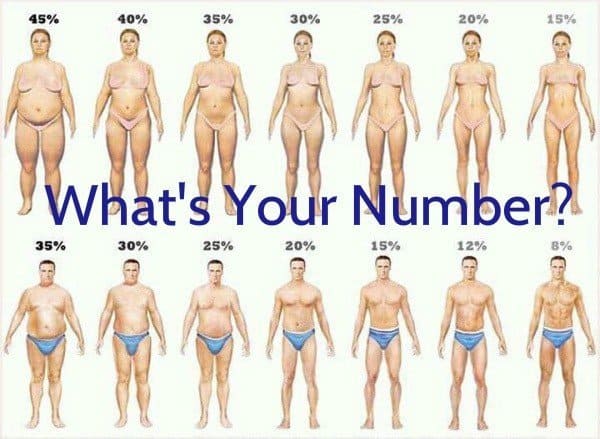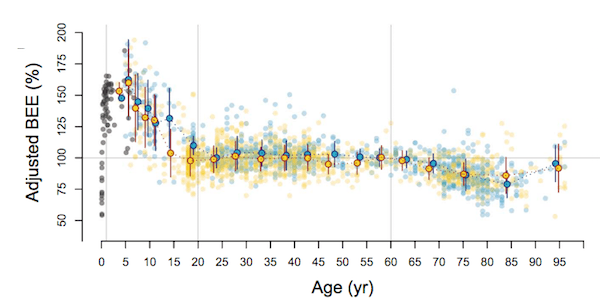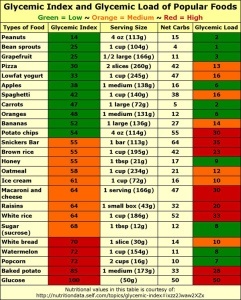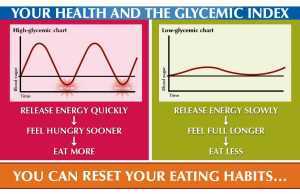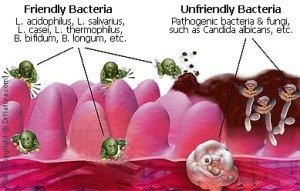8 Sure-fire Ways to Trim Body Fat and Keep It Off Forever, Part 1
Any day is a good day to trim body fat, including right. Our focus will be specific muscle-making, fat busting foods and exercise.
UPDATE: October 9, 2021
Do you know anybody that’s putting on some pounds as they hit and pass middle age?
Maybe you?
Well, that term “middle age spread” was coined for some reason.
Often the reason we think we get heavier as we age is that our metabolism slows down, but a study published in the journal Science that pooled the work of 80 researchers to study data from 6,421 people across 40 years found that from the age of 20, your rate of metabolism barely shifts until age 60. And after 60, the decline is much more slight than you might think.
The study took into account how various factors affect metabolism, like age, size, and gender. It’s not that metabolism doesn’t change at all, the researchers concluded, but that the reduction in metabolic rate is slower than previously thought, and is not the primary reason we tend to gain body fat as we age.
- Basil metabolic rate from 20 to 60 years: “Stable” (basically no change).
- Basil metabolic rate from 60+ to 90 years: 0.1% per year.
- Basil metabolic rate from 90+ years: approximately 26% below middle-aged adults.
As you can see from the graph below, Basil Energy Expenditure (metabolic rate) adjusted for factors related to body size is remarkably constant from age 20 to around 60, and then declines slowly.
I wanted to reveal this to you right up front in order to dispel the metabolism excuse straight away. Now, relieved from the burden of your evil, uncooperative metabolism, let’s dive into the “8 sure-fire ways to trim body fat” without any lingering doubt that your body is not up to the task metabolically.
Indeed, your body can do what’s required to get lean, IF your mindset embraces the necessary resolve and discipline.
To aide us in constructing this blueprint, we’re going to use two articles [1,2] from the late Charles Poliquin, who was among the eminent strength and conditioning coaches in America.
I’m going to slice, dice and connect the dots between these two articles, and deliver to your eager eyes and idling engine one fairly comprehensive missive on how to whittle away the fat. Naturally, I’ll add my own spin, particularly in Part 2, which I’ll post next week. [Here’s Part 2.]
Part 2 is necessary to modify “#2 Eat the best protein” (see below). What’s written there does reflect conventional wisdom, but there are caveats of sufficient scope to warrant a separate article, which will be is Part 2. Continue reading with that in mind.
What you’ll learn here to trim body fat:
- The food that will trim body fat and build muscle
- The food that will heal your gut and trim body fat
- The exercise that will trim body fat and build muscle
- The way sleep (improvement) and stress (reduction) can trim body fat
Without further adieu…
#1 Prioritize healthy macronutrients
Protein, fat and carbohydrates are referred to as “macronutrients”:
Macronutrients are nutrients that provide calories or energy. Nutrients are substances needed for growth, metabolism, and for other body functions. Since “macro” means large, macronutrients are nutrients needed in large amounts. There are three macronutrients: Carbhyodrate, Protein, Fat. Source
Protein and carbs each provide four calories per gram. Fat provides nine calories per gram. 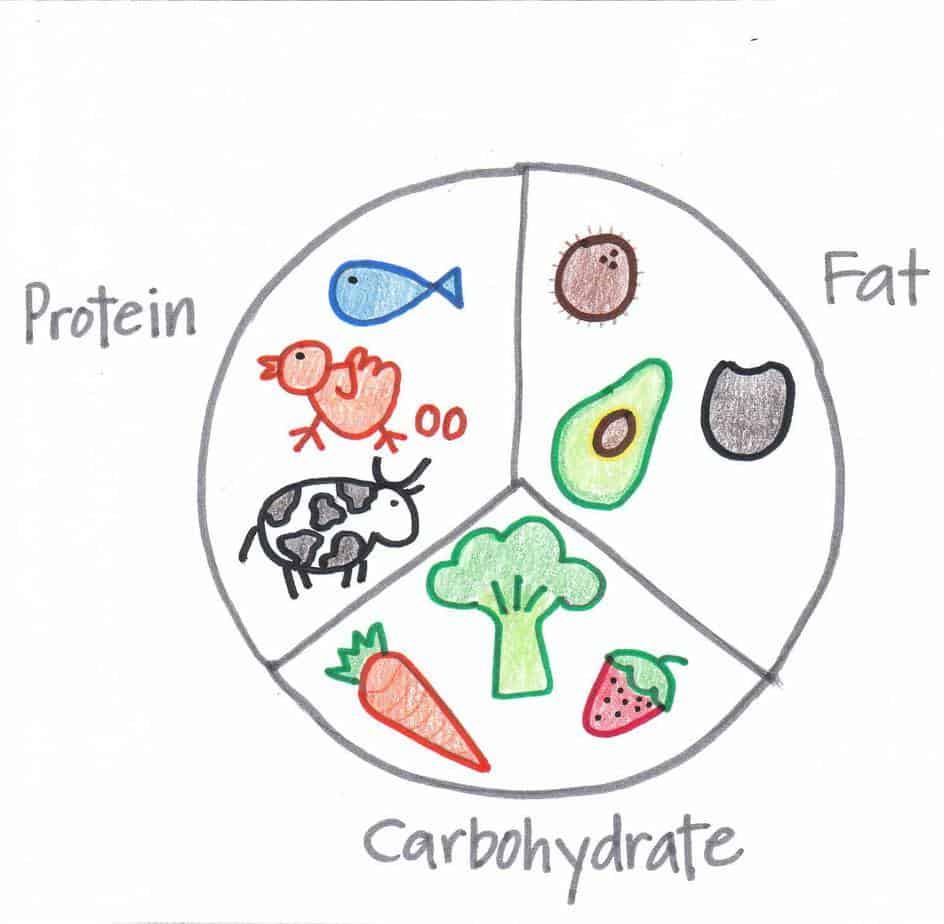
In the early 1970s, the mantra that infused nearly every food selection shouted: “Eat low and non-fat foods!” It made sense. Fat has more than twice the calories per weight as do either protein or carbohydrates. Carbs are what we need for energy. Ergo, eat lots of carbs, not fat. Protein? Who cares!
As I’ll touch on below in #3, turns out that eating too many of the wrong kind of carbs does more to put on fat than does eating dietary fat itself due to quirky insulin.
Suffice to say here is that when it comes to the mix of macronutrients consumed, you need to prioritize:
- Lean protein from multiple sources
- Dietary fat from organic, cold pressed olive oil, fish oil, flax and chia seeds
- Carbohydrates from colorful vegetables, whole fruits, lentils and beans
Let’s explore each of these further…
#2 Eat the best protein
One of the Poliquin articles I’m using as source material for this article lists these five good sources of protein:
- eggs
- whey
- grass-fed beef
- salmon (and cold-water fish)
- pasture-raised chicken (and poultry)
Yes, these are good protein sources, but each has a potential downside, as I’ll enumerate next week I cover in Part 2. Suffice to say here, if you want to get your protein primarily from animal sources, focus on these five for the following reasons:
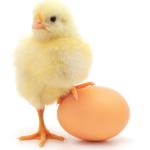 Eggs have the second highest concentration of leucine after milk, which is the most important amino acid for building muscle. They also contain choline used by the body to make a critical neurotransmitter called acetylcholine, which improves brain function, is beneficial for motivation, helps the liver to detoxify and avoid accumulating fat.
Eggs have the second highest concentration of leucine after milk, which is the most important amino acid for building muscle. They also contain choline used by the body to make a critical neurotransmitter called acetylcholine, which improves brain function, is beneficial for motivation, helps the liver to detoxify and avoid accumulating fat.
(Spoiler Alert: there are downsides to leucine and choline, which I’ll address in Part 2.)
Eggs are high in two important fat soluble vitamins, D and K, which results in eggs being highly bioavailable for maximal absorption. Both vitamins are necessary for bone building, and vitamin D is involved in metabolic processes, and development of muscle quality and strength.

Here are some additional benefits from regularly consuming whey protein:
• More than other protein powders, it stimulates fat burning and has a greater thermic effect; meaning that when you eat it, you burn more calories.
• Taking it regularly can improve blood sugar tolerance and insulin sensitivity, and may result in fat loss in overweight people, even in the absence of exercise.
• It can reduce cravings for high-fat, high-carb foods. Interestingly, consuming whey before eating pizza tends to influence less pizza wolfed down. Compared to a control group, a 40-gram dose of whey resulted in subjects eating 100 calories less even when the extra whey calories were added into the caloric total.
If you wonder how much protein is ideal, check out this guide from Examine.com.
(Spoiler Alert: Not all whey protein powders are created equal, which I’ll address in Part 2.)
 Grass-Fed Beef has a good essential amino acid profile, and is high in omega-3 fats that are also found in cold-water fish, carnitine (the nutrient that aids in fat for use as fuel), glutamine (known as a muscle builder and immune booster by body builders), glycine and glutathione (immune boosters), and CLA (a anti-inflammatory and immune enhancing fatty acid).
Grass-Fed Beef has a good essential amino acid profile, and is high in omega-3 fats that are also found in cold-water fish, carnitine (the nutrient that aids in fat for use as fuel), glutamine (known as a muscle builder and immune booster by body builders), glycine and glutathione (immune boosters), and CLA (a anti-inflammatory and immune enhancing fatty acid).
This nutrition profile makes grass-fed beef useful for building lean muscle, because it helps:
• Curb hunger by influencing hunger hormones, and neural signals to tell the brain that you’re full.
• Build muscle, even in the elderly, as evidenced by a study with older women who ate 160 grams of lean beef daily in conjunction with a strength training program, and gained 18% more muscle and strength (and a 16% drop in inflammation) than a those who consumed carb-dominate meals over a four month trial.
• Obtain a greater fat loss during a caloric-deficit diet than consuming the same calories without beef.
(Spoiler Alert: As the human world population approaches eight billion, the planet can not afford a meat-dominant diet, grass-fed or otherwise, not to mention some health considerations, coming up discussed in Part 2.)
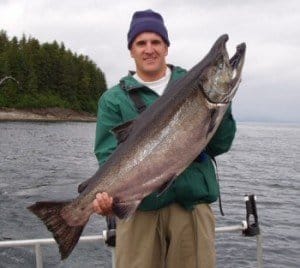 Salmon & Other Coldwater Fish have slightly less protein than beef, but are nutrient rich, providing healthy doses of vitamin B12, niacin, selenium, potassium, and iron, in addition to being high in the omega-3 fats for which most of us are deficient.
Salmon & Other Coldwater Fish have slightly less protein than beef, but are nutrient rich, providing healthy doses of vitamin B12, niacin, selenium, potassium, and iron, in addition to being high in the omega-3 fats for which most of us are deficient.
There are also these body fat and inflammation benefits:
• As with beef, those on a low-calorie diet with salmon or cod as the primary protein sources lost more more body fat and reduced oxidative stress markers more than those who just reduced calories by the same amount. Interestingly, the cod group had the lowest oxidative stress markers.
• Another study showed similar results — those eating fish lost the most body fat — but inflammation was reduced most in the salmon group.
(Spoiler Alert: Farm-raised fish and some fresh caught are not a good choice, and you must be cognizant of the mercury load, as I’ll get into in Part 2.)
 Chicken has the highest protein content per gram, but it’s lower in the powerhouse muscle building Branch Chain Amino Acids (“BCAA’s”) than the other four proteins on this list. For example, 100 grams of broiled chicken had 1.8 g of leucine, whereas one serving of whey protein has two-times more.
Chicken has the highest protein content per gram, but it’s lower in the powerhouse muscle building Branch Chain Amino Acids (“BCAA’s”) than the other four proteins on this list. For example, 100 grams of broiled chicken had 1.8 g of leucine, whereas one serving of whey protein has two-times more.
Despite being less of a muscle builder than whey protein, chicken has an amino acid and fat profile that scientists believe contribute to a thermic effect that influences body fat loss.
A study of overweight women on a 1,250 calorie diet for 9 weeks found that those who ate chicken as their primary protein source lost the most body fat (5.6 kg or 3.3 percent) compared to groups that ate beef or carbs.
The group that ate more chicken consumed fewer calories over the course of the study than the other two groups. The difference in calorie intake between the beef and chicken group was small, but it’s possible that the greater array of amino acids in chicken or a difference in the thermic effect of the proteins influenced body composition changes.
(Spoiler Alert: What kind of chicken you choose is very important (hint: “cage-free” is irrelevant, because it’s definition is overly broad), and you must be aware of bacterial contamination, both to be addressed in Part 2.)
One last point:
Try to eat some protein with every meal, just don’t always make it from an animal source. Protein isn’t easily or effectively stored by the body like fat is, so we need to get a bit of it regularly throughout the day, especially if you’re repairing/building muscle. Also, protein is satiating, so you’ll eat fewer calories throughout the day.
#3 Get most of your carbs from veggies and fruits
There are situations when just about any carb is good, such as after some intense exercise when you need to replenish your glycogen levels and boost insulin to carry that after-workout whey protein to your muscle cells.
Other than that, you need to be careful about your selection of carbohydrates and when you consume them for one very good (and simplistically expressed) reason:
-> High glycemic carbs quickly are converted to sugar (glucose), and if your body does not need to use this energy, it becomes body fat.
This means that regularly stuffing potato chips into your mouth while rooted to the couch watching TV for three hours a night is not going to fuel anything but fat accumulation.
So avoid high glycemic and processed carbs, such as grains and anything that comes in a box. Instead, focus on colorful vegetables like leafy greens, broccoli, asparagus, kale, bok choy, cucumbers, red bell peppers, red chard, purple eggplant, apples, berries, kiwi and pears.
You can also get your protein from veggie sources.
It’s true that more protein is packed into meat than vegetable sources, but even dyed-in-the-wool meat eaters can find something yummy in lentils and beans. In fact, beans and rice are a near-perfect protein from an amino acid point-of-view.
Paleo-eaters will quickly tell you that lentils and beans have harmful lectins and phytic acid, but the benefits from these foods outweigh these two chemical compounds, which by the way, can nearly be eliminated if you soak and (better yet) sprout your legumes and beans slightly before cooking them.
(Read Pump Up Your Metabolism: Eat Protein, Not Wheat)
Ideally, your plate should be filled up with two fist-sized servings of veggies, one fist-sized serving of protein (or if a powder supplement, 20 to 30 grams) and half a fist-sized serving of fat, such as half an avocado, or 10 almonds or walnuts, and a similarly sized portion of fruit, if wanted. (I prefer to eat fruit by itself.) If you feel you also need grains or starch, make them no larger than a fist-size.
For more about the type of carbs that help you lose body fat, the dietary fat that reduces cholesterol and body-building protein, go read:
The Best Anti-aging Protein, Fats and Carbs You Can Eat
Discover the type of carbs that help you lose body fat, the dietary fat that reduces cholesterol and the new anti-aging protein.
#4 Track you diet and nutrition to ensure you maintain a caloric deficit
Line up everyone who has struggled with weight loss. Ask those who have done everything right to lose weight to step forward, and then get the hell out of the way because about 500 million people are about to mow you down!
Scientists have studied this, and their conclusions are that humans are simply not very good at assessing how much they eat and drink, or how hard they exercise.
Studies consistently show that when people track consumption in food journals, they under-record what they’ve eaten by 500 calories a day. That’s a pound worth of calories in one week!. They also significantly underestimate how hard they are exercising, both when weight lifting and doing aerobic exercise.
The result is that what people think they’re doing — doing everything right — is not what’s actually happening. This combination of “errors” is one big reason that diet and exercise programs often don’t lead to fat loss.
Like our system of government, what we need is a system of checks and balances.
Yes, do continue with your food journal, but you need to be honest and meticulous. A check for that could be a trainer, coach or friend who knows more about nutrition and exercise than you do, and is willing to help.
#5 Be sensitive to your insulin
Insulin is a very underrated factor in fat loss and overall body composition.
Insulin is an anabolic hormone that “carries” nutrients into muscle cells. In an insulin sensitive state, the body is more tuned to store energy as muscle glycogen—the energy source for your muscles during exercise. But in an insulin-resistant state, you will be prone to storing the carbohydrate-rich food you consume as fat.
What you want is to be insulin-sensitive, and there are three habits you can build to do just that:
- Exercise vigorously: Lift weights, lift your body weight (push-ups, pull-ups) and do high intensity interval training. This type of exercise recruits many muscle groups simultaneously and makes your cells more responsive to insulin.
- Eat a low glycemic diet: As earlier mentioned, a low glycemic diet of protein, healthy fats, veggies, and certain whole fruits will produce a steady state of energy from steady state blood sugar levels, as opposed to the spikes and valley produced by surging, then dropping blood sugar ignited by sugary, low carb and processed food.
- Spice up your life: Foods such as apple cider vinegar, citrus, cinnamon, ginger and turmeric will significantly increase your cells’ sensitivity to insulin. Eating these foods when you do eat high glycemic grains and starches will modify their insulting amplifying effect.
#6 Get that gut healthy
I’ve written a lot about gut health.
If you haven’t heard, you’re not alone. With you at all times are about 100 trillion other “things”. They’re not good conversationalists, but the microbiota in your gastrointestinal tract influence not only body composition, but mood, digestion, heart health, inflammation, immunity and more!
Poorly functioning digestion is sure to inhibit fat loss by leading to an increase in cortisol and a decrease in overall neurotransmitter production. Plus, it makes you feel sluggish, lowering mood, motivation, and energy levels.
Two bad gut culprits are:
- Harmful bacteria — Overwhelm them by eating probiotic, prebiotic foods, phytonutrients and pea protein to build the strength of the beneficial bacteria.
Chronic inflammation — Calm that down by avoiding foods that you’re sensitive to, and eating indigestible fiber from plants. In his book, Your Personal Paleo Code, Chris Kresser offers a systematic way to identify foods that are harmful to you. (Note: Given the scientific studies I’ve read, I don’t agree with Chris’ advocacy for a meat-dominate diet.)
If you think your health problems emanate from your gut, or are just the curious sort who can weather my writing, I encourage you to read the following articles on the subject:
- 100 Trillion Reasons You’re Fat, Sick and Depressed
- The 4 Food Solution to the 100 Trillion Reasons You’re Fat, Sick and Depressed
- Discover Your Microbiome With
The uBiome TestUpdate: uBiome is now out of business. - Can The Right Gut Bacteria Fight Obesity And Slay Metabolic Syndrome?
For those who would rather poke themself in the eye with your overgrown, jagged toe nail than to read any more of my stuff, just do this:
Eat more fermented foods (kefir, sauerkraut), yogurt, pea protein, and Jerusalem artichoke.
#7 Do high volume full-body resistance and HIIT
Yes, I’ve mentioned exercise already, but this deserves it’s very own section. 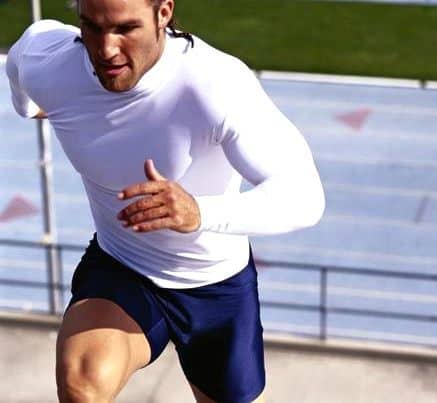
The objective here is to make your body a fat-burning machine. This is achieved by building muscle and creating metabolic stress, which in this case is a good kinda stress.
What you do is really simple:
-> Move against resistance!
The “resistance” manifests in two ways: Volume and Intensity.
High Volume, Full Body Weight Training means using loads that are 65 to 85 percent of your maximum single-rep lift with rest periods between sets of 60 seconds or less, eight or more reps per set, five or more sets per muscle area.
You’re not isolating muscles, like the chest or quadriceps, but are instead doing movements that employ multiple muscles. That’s why I say “muscle area” rather than specific muscle.
Qualifying weight lifting exercises include:
Squats
Dead lifts
Olympic lifts
Standing overhead press
Bodyweight exercises include:
Pull-ups/chin-ups
Push ups
Squats
If you have a high strength-to-weight ratio, meaning that you can lift your body weight more than 30 times with squats, 20 times with push-ups and 12 times with pull/chin-ups, then add a weight vest or put some weights in a backpack.
High Intensity Interval Training is the second “resistance” technique. This is different than a high volume weight lifting or body weight exercise program in that it’s shorter, typically does not utilize weights, and can make you want to puke.
It also makes your body produce more human growth hormone, the elixir of the ageless.
You can choose a stationary bike, an elliptical machine, stair machine, do burpees, sprint on grass, or — my favorite — sprint up stairs. You go all out a certain number of times with a certain rest period in between.
There are different formulations for the “on” and “off” period, and the number of sets. Exercise physiologist Phil Campbell has tested them all and recommends eight sets, 10 seconds all out, 30 seconds active rest (say, walking down the stairs after sprinting up them.) I use this system.
Some things to keep in mind if you want to do HIIT:
It’s almost certain you are not prepared to go all out, even one time. You must gradually prepare for this, and that means warming up and taking it slow.
The next thing to know:
It’s almost certain you are not prepared to go all out, even one time. You must gradually prepare for this, and that means warming up and taking it slow.
Get it?
It’s great to combine HIIT and high volume weight training (though not on the same days). Both build muscle, raise your resting metabolic rate (you burn more calories at rest), and produce sufficient metabolic stress to burn additional calories during the 24-hour post exercise recovery period.
Which brings me to an important point:
-> The best fat-burning exercise is the one that doesn’t burn the most calories during the exercise itself, but the most calories overall.
#8 Sleep more, stress less
They’re often inversely related: sleep more, stress less. Or stress less by sleeping more. Better yet, do both — sleep a good, interrupted seven, eight or nine hours every night, and be nice to your adrenals by learning to avoid a fight or flight mode when faced with situations that could keep you simmering in a state of stress for long periods of time.
Even if you’re likely to be its next meal whatever you do, it’s a good idea to fight or run away from a tiger, but it’s not a good idea and completely avoidable not go into a similar cortisol pumping body/mind state when stuck in traffic.
(Read How Depression and Stress Make Us Age Faster)
The reason a good night’s sleep is important for fat loss is because when we sleep human growth hormone is released which burns fat. Beyond that, like with stress, cortisol increases when you get insufficient sleep, which further adds to the fat accumulation because it decreases the body’s insulin sensitivity.
Other hormones are compromised as well, such as:
- Testosterone (important for body composition in both men AND women, though women need only about 10 percent of that appropriate for men),
- Melatonin (needed for sleep), and
- Leptin (regulates the brain cells that tell you how much to eat).
Another thing to know is when chronically stressed or sleep-deprived, neurons in the brain die off they compromise the neurological connection from your brain to muscle, and thus reverse the benefits gained by exercise.
Think you may be chronically stressed? Take these four at home tests and find out: Got Stress? Here Are Four Adrenal Fatigue Tests You Can Do At Home.
Your “trim body fat” takeaway
Here’s the basics of what you need to know (and do!) to trim body fat and keep it off forever:
- Eat high quality protein frequently throughout the day, preferably with each meal.
- Maximize your consumption of vegetables and minimize your consumption of grains, but when you do eat them, go for low glycemic loads.
- Consume fewer calories than you expend until your body composition meets with your approval, which typically means you have to track what you eat.
- Eat gut healing foods that build up the beneficial microbiota in your gut, such as kiefer, sauerkraut, yogurt, pea protein, and Jerusalem artichoke.
- Vigorously exercise your muscles and cardiovascular system with multiple-muscle exercises and some sort of HIIT.
- Sleep more, stress less.
OK, you now have the blueprint, so go build your engine, build muscle and (inevitably) trim body fat!
Click for Part 2
Last Updated on September 29, 2022 by Joe Garma

